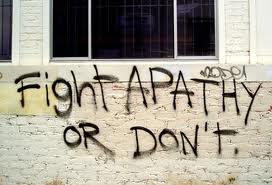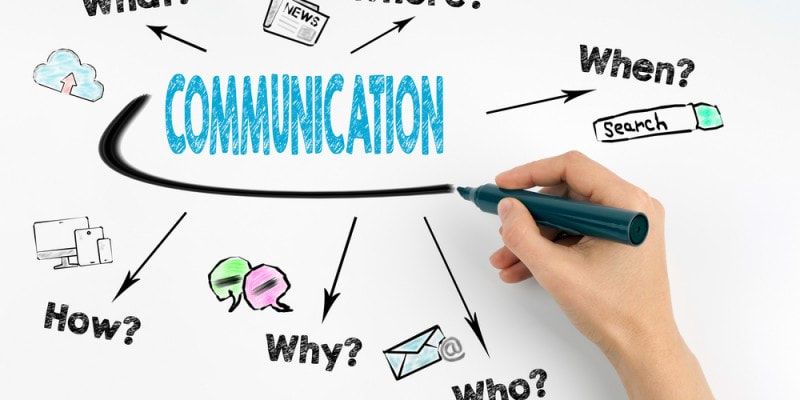|
Having difficult conversations is…well…difficult. This is especially true if you need to have a difficult conversation with a supervisor or someone else at a higher level in your organization.
I was recently coaching a young executive who had been struggling with a direct report, who had a history of creating challenges among the team even back to a previous manager. But, this person was also highly valuable because of their skills and experience, and no one wanted to lose them. The young executive with whom I was speaking had sought advice and support from his superior to deal with the issue. In an attempt to help, his boss said that the problem employee could just report directly to him and he would deal with it. Even with the best intentions and that positive sense of collective required in the hustle of a startup, this attempt to help created far bigger problems for the young executive. Now, the rest of his direct reports believed that if they disagreed with him or if they didn’t like what he said then they too could go around him and directly to his superior. The workaround intended to relieve this young executive had accidentally neutered his ability to lead the rest of his team and as a result multiplied his stress. We were talking through how he might have this conversation with his boss. Sparing additional detail, here were some key principles we landed on: Approach with gratitude: We talked about how he could acknowledge the good intent of his supervisor’s move and open the conversation with that appreciation. This would ensure that nothing came across as complaining or personal or ungrateful, which were things he was really worried about. He valued and wanted to protect his positive relationship with his boss. Appeal to common interests: This young executive was hired because of his own skills and the belief that he could lead this team and the company to a new phase of growth and maturity. He knew that he and his boss could agree on this premise. With that out in the open, he needed to describe the unintended consequences of changing the reporting structure. Clearly, neither of them wanted this young executive to not be able to perform the job he was hired to do. Focus on outcomes, not people: We talked about making sure the conversation with his boss never became about the valuable, but problem employee. It couldn’t become personal. It had to be about process and performance. So, this young executive needed to show with examples how his leadership was being undermined with other direct reports and how that was impacting performance. Define an agreeable path forward: This was not a situation that could linger. This young executive was losing authority and credibility by the day and as a result was also developing a lot of frustration and anxiety about his role and the work and so forth. So, he needed to use steps 1-3 to make sure the conversation was primed for: so what do we do now? Within a few hours of our conversation, I got an email back. The young executive and his boss had agreed that an announcement would be made to the team about the change in reporting structure, so it no longer looked like a workaround that others could also take. They also defined specifically when that announcement would be made. This path forward not only would help solve the authority problem but would also relieve the stress valve for the young executive who now knew something would happen. This wouldn’t linger. Perhaps most importantly in the long run, I suspect that this young executive’s approach and willingness to have a difficult conversation with his boss only reinforced why he was hired in the first place. I have a feeling his opportunity and authority will only grow as a result of the experience.
0 Comments
A leadership team I support was struggling with a particular employee and the issues had been lingering for several months. This employee had been a positive team member and quality contributor until recently. But lately, the employee’s performance simply hadn’t been good enough. The quality wasn’t there. Her work was often incomplete. It lacked depth and insight. And, it was starting to impact the team as the other members had picked up the slack and, as a result, was feeling the tension with management.
The management team had already let the employee know improvement was necessary. They had started to meet more frequently and to dial up the necessary feedback and micromanagement. But, the more time they spent together, the more the employee seemed to pull back. In other words, as they ratcheted up their formal communication to try to course correct, the informal and discretionary communication all but stopped. The managers didn’t want to fire her, but they didn’t know what else to do. They felt stuck. In a session with one of the managers, we discussed the simple-but-powerful 5 Whys process created decades ago by Toyota to help them drill down to root causes of problems in their manufacturing. The process is so simple, however, that it really works with any problem. Just ask “why” five times, each time asking “why” of the previous answer such that you create a sort of cascade of deeper and deeper problem statements. If nothing else, it can deepen your understanding of the variance and dynamics of a problem to know what part you have the time, energy, and resources to address. In other words, you may not always have the capacity to address the root cause but at least understand that you aren’t addressing the root cause. In this case, the manager took the 5 Whys back to her colleague and they agreed to use it as a structured conversation guide in a meeting with their struggling employee. They introduced the process and the three of them worked together to dig deeper into what was behind the employee’s poor performance. This was the manager’s message back to me: “I tried the 5 Whys in my conversation with this person. My boss was with me as well. So, I just introduced the process and put {the performance problem} up on a whiteboard and started asking why. It was so helpful keeping the conversation focused and not so emotional. And after all of this time where we thought the employee was the problem, we discovered she actually didn’t have all the information she needed to do what we had been asking her to do. It was us! It was our problem! And here we were thinking we were going to have to fire her! Anyway, we left the conversation so much clearer and in a much better place. It was great! Thank you!” I was on a recent coaching call where a mid-level leader of an independent business unit within a rapidly growing company was dealing with the following realities:
1. Her team was entirely remote. 2. She was entirely remote from her supervisor and company leadership. 3. Her team was acquired over two years prior but still felt little connection with the acquiring company. She and her team were performing and performing well, but without much distinction from how they worked prior to the acquisition. The autonomy was good on some levels, but the challenge for this leader was that she was being asked questions about the larger organization, its vision and direction, and even what would happen when it exited. She didn’t have any of the answers. She felt as disconnected and uninformed as they did. There was a slow but growing sense of fear and uncertainty within her team and a developing anxiety within her as their leader. So, what should she do about it? How should she present her concerns? Here are some things we came up with: 1. Start with you. We talked about her just having some open conversations with her manager and/or peers at similar levels or situations within the organization as a way of asking how others were managing this better than her. Instead of looking up at the organization and starting with “you need to fix this”, this approach takes ownership and starts with “how can I do better”. No one is going to shut you down, marginalize your concerns, or get defensive when you start with “how can I do my job better?” 2. Speak on behalf of your team. As you explore how you can do better, frame it with what you are hearing from your people. Share their stories. Share the questions they are asking you that you can’t answer. Give a sense of their fear and frustration. Paint that picture. Then, frame your needs as it relates to your ability to effectively lead them. If you don’t feel informed and connected, you can’t help them feel informed and connected. So again, you are asking to be better equipped to do your job well – which everyone should be pretty well in favor of. 3. Show you are thinking big picture. Provide your supervisor the strategic context for your concern. Talk about the health of the team and the related health of the company. Talk about company growth and the challenges of retaining and attracting talent. Talk about the cost of losing some of the specific people who are asking you the questions you can’t answer. Talk about how this problem only gets bigger the more the company grows if it’s not addressed. 4. Listen for how others see, understand, and prioritize the issue. You don’t have to jump straight to solutions. In this case, the first goal is to raise the issue and get a conversation started. So, in alignment with #1, stay focused on tactical next steps and where they can start with you, but involve others where necessary. Rapidly growing companies have innumerable competing priorities. Raise your issue and better understand where it fits in the mix. This will help align expectations for action or lack thereof. Working with remote teams requires an entirely different level of intentionality when it comes to communication and culture. Problems like the one this leader was presenting don’t naturally get seen by company leadership and don’t organically surface in their day-to-day. Leaders in these situations must recognize this reality and find ways and forums for bringing these issues to light. They can’t just let them stay quiet. That’s clearly not in anyone’s best interest. Sometimes it’s hard to find the words or the process where none seem to exist. But, that doesn’t make conversations like these any less imperative. In order to effectively lead through others, you often have to manage up to get what you need. 1. Talking in superlatives is the worst. Stop it. When we say something is the best, worst, greatest, biggest, and so forth, we minimize the rest of the world, which in turn undermines the very point we are trying to make. There is only one superlative of a category of things. So, unless you genuinely believe that meal was the worst, that person was the smartest, or that product was the best, maybe try a little harder and express what you think about it specifically. Speaking in superlatives is lazy and it is making us dumber – in time, probably the dumbest. Hail to the chief!
2. Finite terms are finished. They’re over. Unless someone has died, something has truly been destroyed, or a quantifiable time has irrevocably passed, we should stop saying things - and particularly people - are “finished”. We should stop dramatically asking “is this the end of…” seemingly anything and everything almost every day, and alternately resist over-selling the comeback when nothing or no one was ever actually gone. Life is a perpetually unfolding process that should be reflected in the language we use to describe it. We’ve killed the idea of time and lost our own control of how we express it. But, I bet the comeback story will be the best! 3. Hyperbole is ruining our lives. Literally. If we want to resist the current language zeitgeist, we can start by speaking in clear, honest, and direct terms and simply say what we mean. (I know: how boring!) We can stop, for instance, using “literally” to dramatize the figurative nature of what we are actually saying. Let’s make actual content the point of what we say. Information. Ideas. Questions. Let’s be literal and figurative, and know the difference. Everything doesn’t need drama to make a point or to prove its value. And, surely we shouldn’t accept drama itself as the point or value. Nothing “broke the internet.” Speak like a human, not like a headline. -breathes deeply- Thanks for your indulgence. Speak well, my friends. Image: https://www.theodysseyonline.com/the-harm-in-empty-words  I like words. I believe in their power. If you read my blog that should be pretty clear. But, yesterday I was reminded that years before I was ever writing on a regular basis, I was trying to instill the power of words, not just for communication, but also for understanding the world, where and how we fit in it. I had lunch yesterday with one of the first youth I ever worked with, James, Class of 2004. He has moved back to town and we were catching up and thinking through networking and that kind of thing. In moving, he had left a job where he was working with students in an alternative school, young people from the same kind of community we had worked in, but more acute, more intense. I was glad to know he had translated some of his teen experiences into doing this kind of work, but I was stunned when he told me he actually used one of my workshops/discussions in his own work, more than a dozen years later. I couldn’t believe he still remembered it. It was one of those conversations I had facilitated almost certainly when I had hit peak frustration, and you never really know how those will work out! When I worked with youth, we talked about language pretty frequently. We discussed language in terms of communication, power, privilege, and how we need to keep asking “why” to blow up racial, economic, and cultural assumptions. But, this time, as James reminded me, I picked four specific words. I picked these four words because I felt my team needed them in their vocabularies. I picked these four words because they articulated the things we felt, experienced, and saw every day in our community. I picked these four words because we couldn’t get anywhere with our work, with exploding issues of oppression, with becoming youth advocates and organizers, with trying to change systems without understanding and attacking them. So, what were the words? Apathy Complacency Lethargy Atrophy These aren’t THE four words, or the BEST four words. They were probably just the four words burning in my brain as I walked to work that day, stewing on how to incite and awaken our team and our community. We discussed what they meant, according to the dictionary and our localized take. I asked if they had any examples. I asked them why they thought we were discussing these words. Ultimately, I asked them to take the next few days and to keep these words at the top of their minds, to go back home, to school, and to their neighborhood and watch for these words to surface in their experiences. I asked them to bring those observations back to the group. How do these observations relate to better strategies for reducing the use of payday loans and other predatory lenders in our community? How do they enlighten pathways for increasing college access for students in our schools? Too often, we look at words merely as a medium for expressing our thoughts, communicating to others, written or verbal. We don’t spend enough time thinking of the power of words to help us formulate our thoughts, to liberate us, to help us name and identify and begin to understand our oppressions or opportunities. We don’t think about the intellectual and creative force of words that are never written or spoken, the words churning in our minds as we seek to navigate and understand our world. These four words for me, on that day, at that time, with those young people were the most dangerous words I could think of. They were the words that could determine a future, define a community. They were the words I needed our team to own and understand, to shock our team into a more creative place, to liberate us from the words themselves. I am indebted to James for reminding me of this lesson. I am in awe and inspired by his actually taking them and making them part of who he is and how he helps others navigate their worlds. Now you take them, keep them top of mind, and try to recognize where you see them in your world. Hopefully, recognizing these four words can incite us all to make ourselves and our world better.  A mere 47 years after being coined, “Conway’s Law” was just introduced to me this week. It states: Any organization that designs a system (defined broadly) will produce a design whose structure is a copy of the organization's communication structure. Sit with that for a minute. Reflect on systems your organization has designed: staffing, technologies, workflows, data management, reporting, and so on. Now, consider the communication structures of your organization (poor, partial, siloed, or nil still represents a structure). So why is this “law” so profound, and frustrating? 1. It’s counterintuitive. Communication structures determine system development; they don’t just facilitate it. We typically regard communication as a de facto point of process, sometimes intentional, sometimes not, that supports or inhibits our work. It just happens. It’s a conduit. A medium. It’s a means to an end. Maybe it’s even a workaround. Conway’s Law, however, suggests that rather than being merely a means, our communication determines our end; not just its success or failure, but the actual design. 2. It demands a different level of awareness. We are part of the organizational structure trying to change the structure that we are still actively creating. Communication typically functions on a default setting, or perhaps more accurately, an amalgamation of default settings within complex organizations. For most of us, it lives and functions below the level of consciousness, or at least intentionality. As such, we are simultaneously passive creators and active victims of our own communication structures – and according to Conway’s Law, therefore, the other systems we are creating. 3. We’ve wasted a lot of time and resources. Change efforts that don’t start with addressing communication structures will be marginal – i.e. not systemic. This is one reason why most of us have been frustrated by the organizational change attempts we have experienced. Communicating is not just about the message of change or the charismatic delivery of an idea by a strong leader. It’s about the process of communication, the structure on which the change must happen over time. And, few of us, in all of our change efforts, have invested deeply in our communication structures. I would love to follow this brief reflection with a handy and insightful list of 3-5 good recommendations for action. But, the reality is, if we go back to Conway’s Law, there is one recommendation for any organization: Start with communication! And start leading.
Communication is the “canary in the coalmine” of organizational dysfunction. But unlike the coal miners who understood the danger and knew when it was time to act, organizational leaders too often ignore it, work around it, or double down on what isn’t working. And, part of the reason is that communication is a two-headed monster – sender and receiver. Each can easily blame the other for its breakdown. This is classic human relationship stuff: You never told me vs. you weren’t listening. I don’t want this vs. you need this. I don’t check that vs. that’s where I sent it. Who’s right? Who is to blame for the breakdown? If you are leading an organization with communication challenges, these questions don’t really matter. You know that poor communication is generating unnecessary risk and employee stress, reducing productivity and performance, and ultimately, losing money for your company. And, in hospitals, this can literally impact life and death – not just the company bottom line. It’s ebola and flu and other emerging updates and critical protocols. It’s drug shortages and emergency alerts. It’s technology and equipment outages. It’s critical research and best practices. It’s physician performance metrics. Delivering this content through mass emails or other “spray-and-pray” tools just generates noise and wastes time - which further erodes communication.Research at one academic medical center reported that a single physician received 2035 mass distribution emails from the center over a 12-month period, at a cost of as much as $4900 per physician per year. Improving communication requires change; changing workflows, technologies, expectations, investments, and so on. And, most people don’t exactly love change. But, as the saying goes, “if you don’t like change, you’re going to like irrelevance even less.” Have you ever met someone who talks constantly?
Most of us probably have. And, typically, the constant talking drives us crazy. It’s about them. It’s on topics we don’t care about. It’s too fast to consume. It meanders into a string of non-sequiturs. It’s not a time we are ready or able to listen. We have more urgent things to tend to. There are a lot of reasons the constant talker drives us crazy, and, in time, most of us end up tuning out and will probably avoid that person in the future. Have you ever met someone you only wanted to listen to? Most of us probably have met incredibly compelling people to whom we could listen longer than most anyone else. We love what they have to say. But, most of us, by nature of that person’s compelling ideas and our own engagement, also want to ask them questions, want to respond with our own ideas and processing. Maybe we need something clarified, or just want to know more about something they skimmed over. There are definitely people out there we want to listen to, but rarely do we ONLY want to listen. Have you ever met someone who seemed never to talk at all? Whether it was an awkward first date, a silent co-worker, or a friend-of-a-friend who didn’t say much at dinner, most of us have had the experience of attempting to communicate only to get little-to-nothing back. And, often, it leaves us questioning the relationship: do they not like us? are they just unfriendly? did I do something wrong? what am I missing? Communication is at least two ways and most of us are left wanting when we feel what we are trying to give or share is not reciprocated. Effective communication is about a lot of things. Frequency. Dose. Engagement. Relevance. And, the nature of these changes over time. So, ultimately, communication also requires a Relationship. As they say: You have to know your audience.  My one-year-old daughter talks constantly. Truly. Constantly. She has her own language. She goes on and on, high and low, back-of-the-throat to the top-of-the-lungs, making all kinds of odd and funny sounds. Her brows furrow (got that from Dad). Her eyes look around for some acknowledgment. She pauses. Smiles. My wife and I talk back, acknowledging, reinforcing, and doing all we can to encourage her expression. But, she quickly becomes frustrated (also from Dad). First the arms go up! Then they start waving around. The hands slam down. She arches her back, torques her body left and right. The “sweet” sounds of a baby start to be replaced by shrieking sounds of frustration. The pitch gets higher. The crying begins. Now, she’s just angry. We scramble to hand her food. Water. A bottle. A toy. We pick her up. Pass her around. Try playing peek-a-boo. Sometimes, one of these is the right response; sometimes not. We are scrambling, but failing to communicate; and it is wearing all of us out! I couldn’t help but think about how this dissonant dance of ineffective communication remains almost humorously consistent from toddler to Fortune 500 (although the resulting behaviors may be slightly different). We have all worked with individuals and in organizations that are frustrated, exasperated, and exhausted because of bad communication. We all know their versions of the give-and-take of the parent and child described above. We all know it isn’t pretty (for one, it lacks cuteness). For my daughter, learning to talk isn’t just about making sounds. Ultimately, she will have to learn words. She will have to learn to string them together to make phrases and, then structure sentences that others understand. She will learn context (a time and a place for certain words and topics). She will learn tone, (and then forget it as a teenager). She will develop her own voice and understand how it can support, or get in the way of, her communicating. She will explore a variety of mediums to deliver her thoughts and insights and ideas, and figure out which ones work best for her and for particular audiences. If it is this complicated for my daughter, then for organizations it is exponentially more so. Despite what most of us call communication, it cannot be as simple as clicking “send.” For organizations, it’s also about structure, context, tone, voice, medium, and audience. And, given the complexity of organizations and the unique relationships within them, these elements are also much more dynamic. Knowing your audience, for example, is deceptively complicated. Good communicators understand that they have many audiences who communicate in many different “languages” even within one organization, perhaps even one department or division. They know that these audiences, like the individuals who make them up, change over time. And, the right context or tone or voice or medium will vary for them at different times. Communication, therefore, is not a singular concept, and it is certainly not static. It is a skill that develops, evolves, and must be actively nurtured, invested in, and evaluated – whether for the individual or an organization. And, contrary to most of our practices, communication doesn’t start with us. It starts with our audience; and we have to learn their language. If you want your people to trust your communication:
1. Make sure the information is accurate and timely. If the company newsletter simply summarizes what’s already being talked about in the cafeteria, around the water cooler, or on countless internal email chains, then it is certainly not building trust in the company or it’s ability to communicate with its people. In fact, it’s probably hurting trust. You’re too late and as a result probably already behind the information curve. Your people will go elsewhere if they really want to know what’s up. 2. Make sure it is clear and relevant. If you send me the 500-word email that has 3 pdf attachments and bury what you want or expect me to do with the information somewhere in the middle, I’m either going to miss something important or realize you don’t know, or care, what is important to me because you sent me something seemingly useless. Either way, you are diminishing the value and impact of all of your future communications by sending confusing, overwhelming, and irrelevant ones today. 3. Find the right frequency, dose, and delivery. Different people work in different ways. Different jobs require the use of different communication channels. Understanding the right amount of communication and the right medium is critical to demonstrating an understanding of the recipient and his role in the company. For instance, an email to an administrator gets served differently than an email to a front-line employee who is on his feet all day. So, 50 emails in a day may not be a big deal for the former and completely overwhelming and unworkable for the latter. If you want to communicate trust: 1. Listen, and prove you are listening. If your people don’t think you are listening, then it may not matter even if you are. Yes, first you have to listen, but you also have to demonstrate to your people that they have been heard. This does not always mean that you do their bidding, but you acknowledge their insights and explain, if necessary, why you chose to do something different. People are far more distrustful if they think they aren’t being listened to than if they realize there was just a difference of opinion. 2. Credit ideas and insights intentionally and frequently. Anywhere possible, good leaders attribute their actions to the insights and guidance of others. Show and tell your people how they are influencing and leading the organization. A good leader knows it is more important to have his people securely behind him than his ego securely in front of him. 3. Seek input on strategic, operational, perceptual, and tactical issues. People distrust when they only get to provide input on marginal or relatively unimportant things. They also don’t love it when they only get asked for input when some outside consultant is helping facilitate a big strategic plan or vision session. Finding ways for clear and consistent feedback channels on a range of topics will not only build trust but also ensure you have all of the insights you need to make good decisions. |
Categories
All
Archives
April 2024
|





 RSS Feed
RSS Feed